雄大な自然の中に歴史と文化が息づく
身延山総門内約300万坪には
数えきれないほどの魅力がちりばめられています。
また本堂地階の身延山宝物館では、
国宝・重要文化財・指定文化財を数多く所蔵する
身延文庫の収蔵品を、随時、適宜に展示しています。

Map of Mt.Minobu
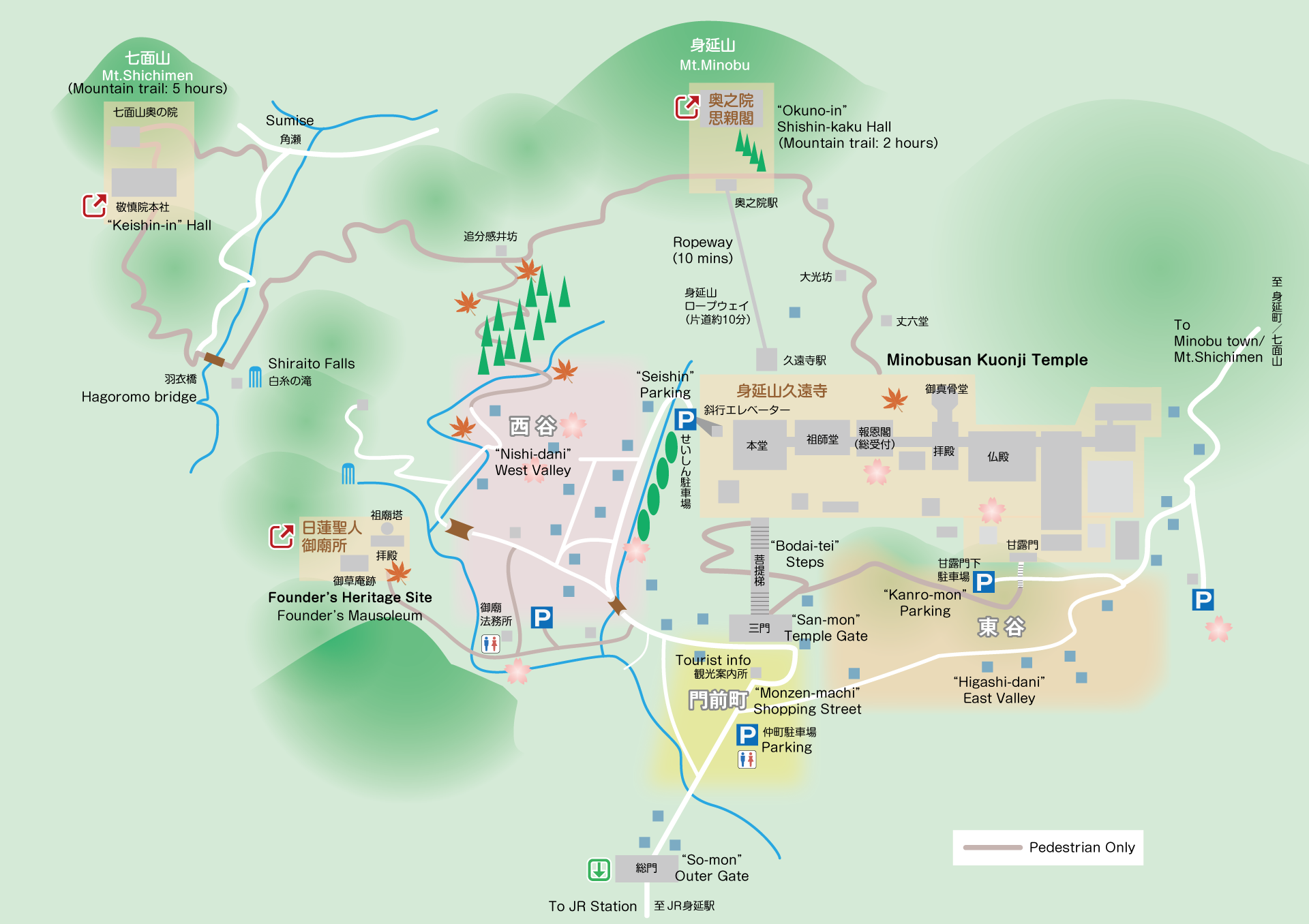
Map of Minobusan Kuonji temple
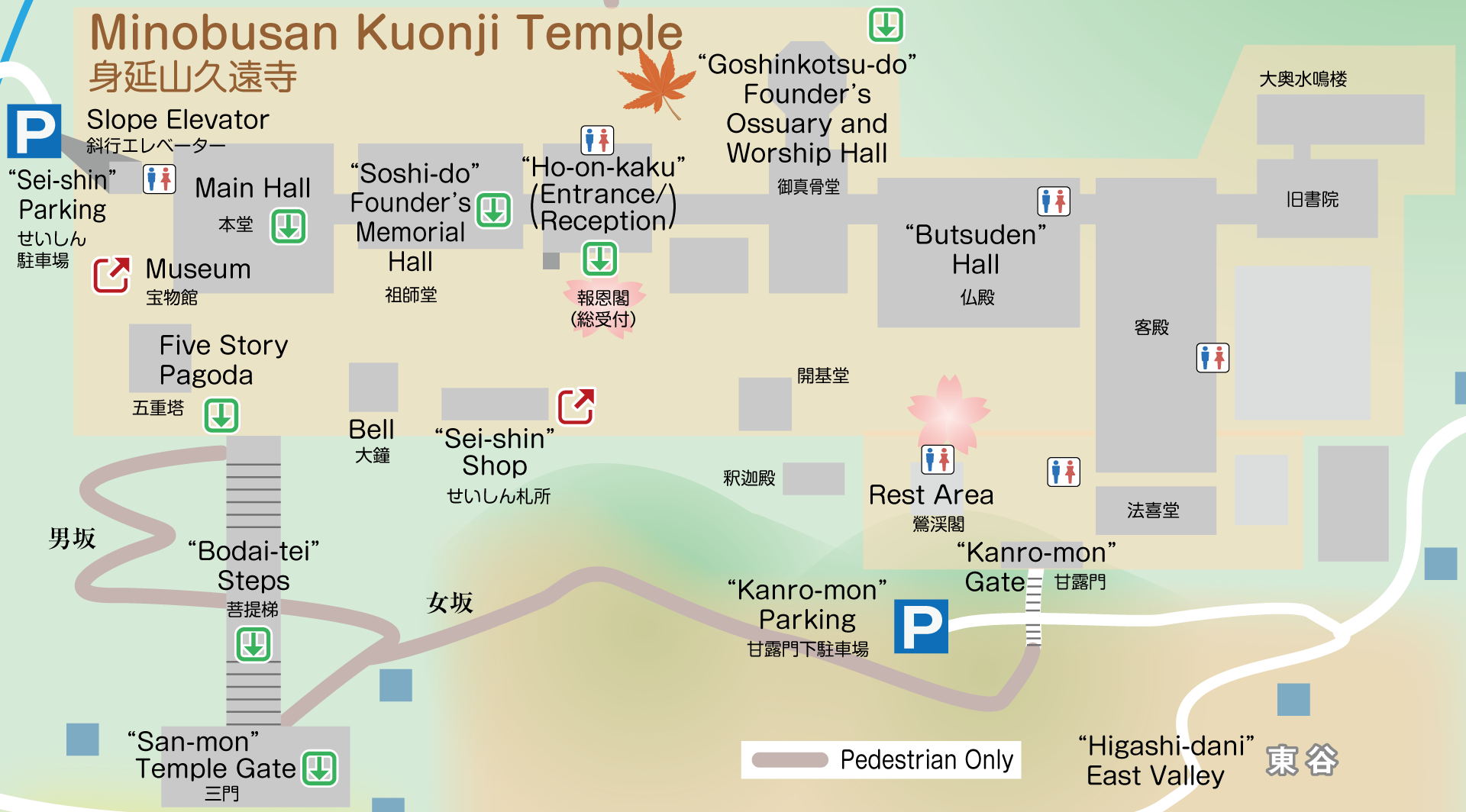
Map of Minobusan Kuonji temple
•The roads from “Seishin” parking or “Kanro-mon” parking to “San-Mon” Temple gate, are quite steep. It will take 15 to 20 min walk.
·Vehicle is prohibited inside the land of Kuonji temple. You need to drive between “Seishin” parking and “Kanro-mon” parking through shopping street passing by “San-Mon” Temple gate.
Outer Gate
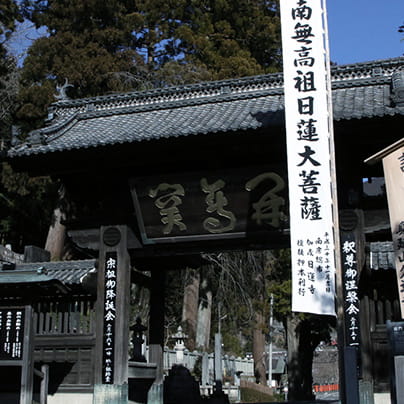
Built by Nichiden Shonin, 28th Successor. The decorative plaque calligraphed by the 36th Successor Niccho Shonin with the message “Kai-E-Kan” literally indicates the Passage for All to Liberation under the Lotus Sutra.
Temple Gate
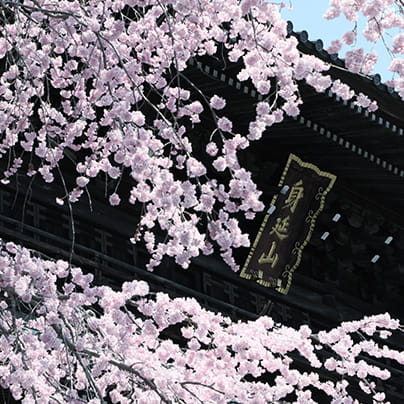
The gate symbolizes the Three Gates of Liberation: “Emptiness”, “Formlessness” and “Desirelessness” and upholds a calligraphy plaque “Minobusan” drawn by the 79th Successor Nichiji Shonin.
Bodai-tei (Ladder of Buddhahood)
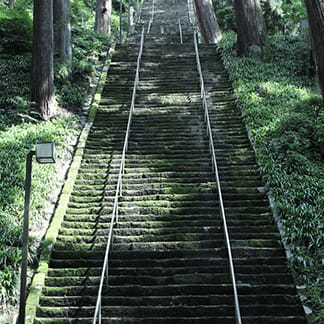
A 287-step stone path provides access from the Temple Gate to the Main Hall, where the top, representing Nirvana, is divided into seven sections, evoking the seven letters comprising Odaimoku.
Five-Story Pagoda
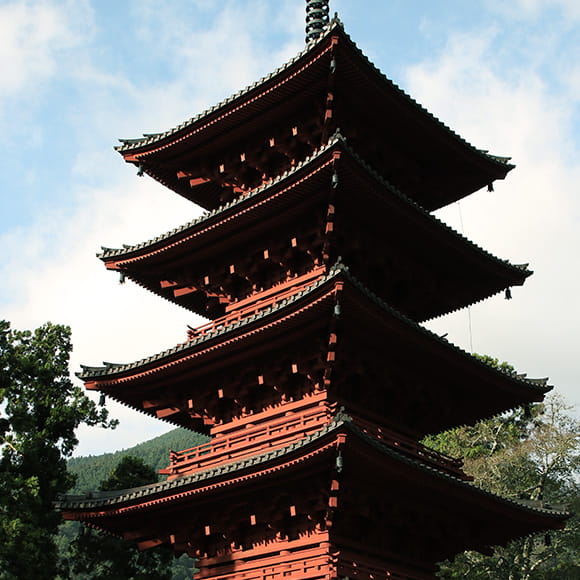
Restored in May 2009, 134 years after it was destroyed in a great fire in 1875. Made of 100% national wood products, the pagoda is a complete restoration of the original, using a design and construction method identical to that used four centuries ago.
Barrier-Free Cart Paths
Cart paths connecting buildings facilitate travel around the precincts for physically-challenged visitors. Completed as part of the adjunct construction project to the Five-Story Pagoda in 2009.
Slope Elevator
Completed as part of the 2009 Five-Story Pagoda additional project, the slope elevator eliminates the need to use steps to access the temple yard directly from the “Seishin Parking Area” located in Nishidani.
Main Hall

Rebuilt as the major part of the Nichiren Shonin 700th Anniversary Project in 1985, the hall measures 32 meters wide by 51 meters deep and can accommodate 2500 service attendees.
Founder’s Memorial Hall
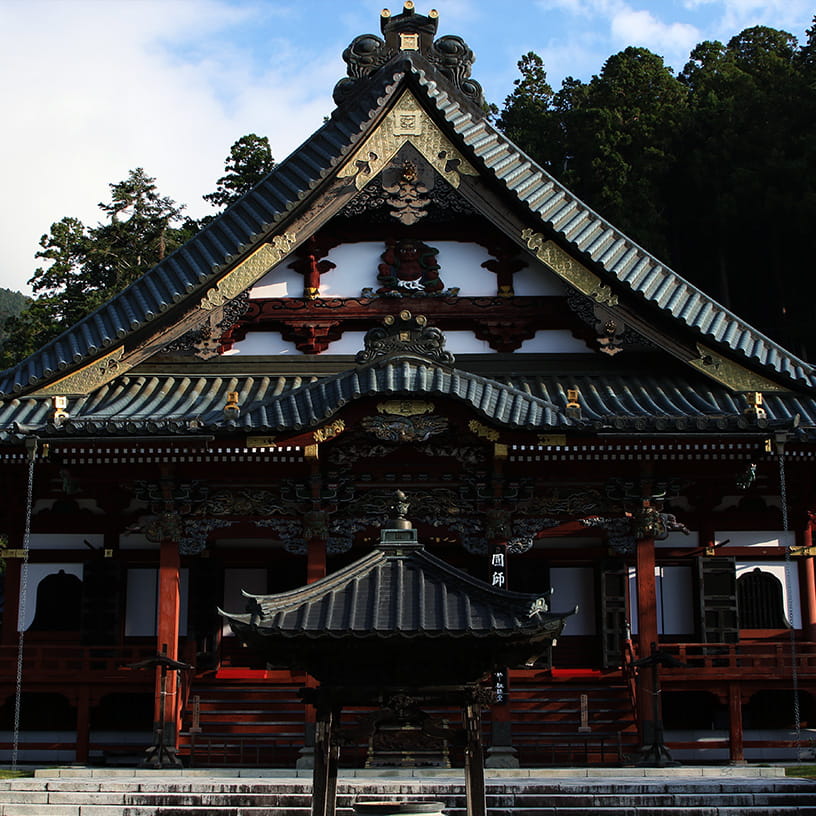
The hall enshrines the spirit of Nichiren Shonin and is also known as “Seishin-kaku” (a dwelling place for the divine soul). A temple building once located in Edo (today Tokyo) was moved and rededicated as the hall in 1881.
Ho-on-Kaku (Return Goodness) House
Constructed as part of the celebration project for the 750th Anniversary of Order Founding, the hall includes a reception and lounge areas for followers and one of the main features is a barrier-free design.
Founder’s Ossuary & Worship Hall
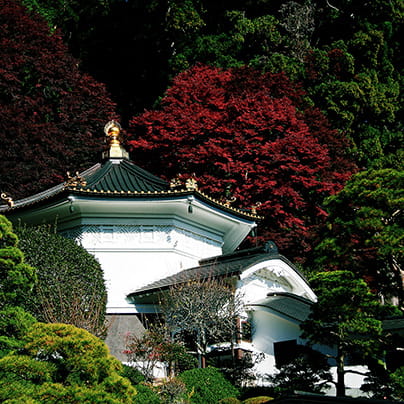
The area comprises a white octagonal ossuary and an attached worship hall. The ossuary enshrining the remains of Nichiren Shonin is equipped with the latest disaster-proof designs.
“Gobyo-sho” : Founder’s Heritage Site / Mausoleum
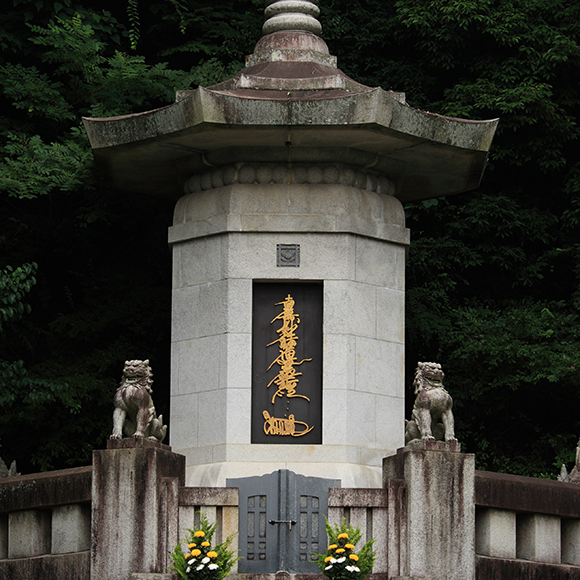
Founder’s Hermitage Site
The site of the hermitage where Nichiren Shonin spent his nine years of devotion; reciting the Lotus Sutra and training his disciples.
Founder’s Mausoleum
The mausoleum encases a five-element pagoda, built upon the passing of Nichiren Shonin and a cabinet located underground to enshrine portions of his remains.
Thousand Cedar Trees
The wood is one of the most magnificent natural beauties Minobusan can provide. Over 40 meters high, it is a designated natural monument in Yamanashi Prefecture.
“Shishin-Kaku” : Parents’ Remembrance Hall
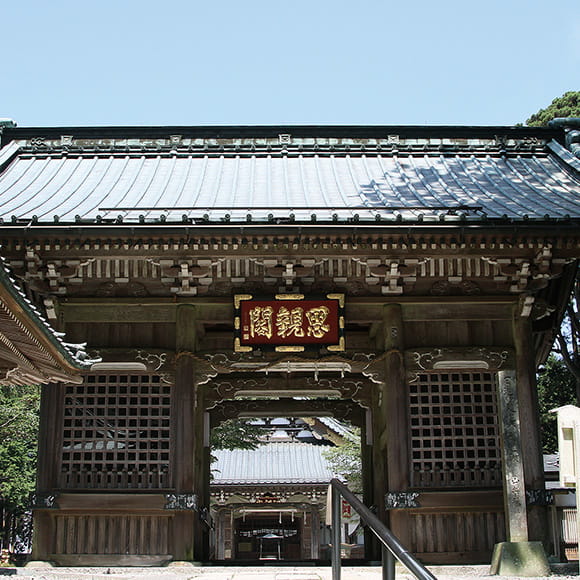
Even on windy or rainy days, Nichiren Shonin would climb Mt. Minobu to remember his deceased parents. This hall is located at the mountain top and alongside its precincts, bordered by a gate featuring a pair of Nio (or fearsome-faced) Guardian statues.
“Shichimenzan” : Mt. Shichimen
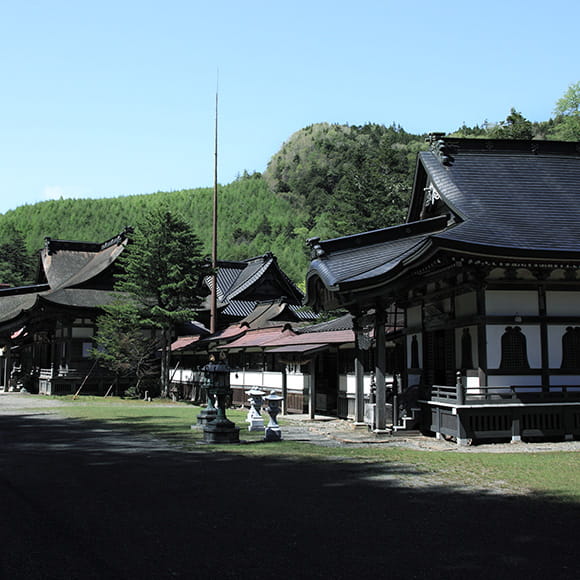
The mountain is a sanctuary located to the west of Mt. Minobu, topped off with Keishinin Temple, where Shichimen Daimyojin or the protective deity of the Lotus Sutra is enshrined. The photo shows its gate called “Wako Mon” (or the Gate of Harmony Light).
